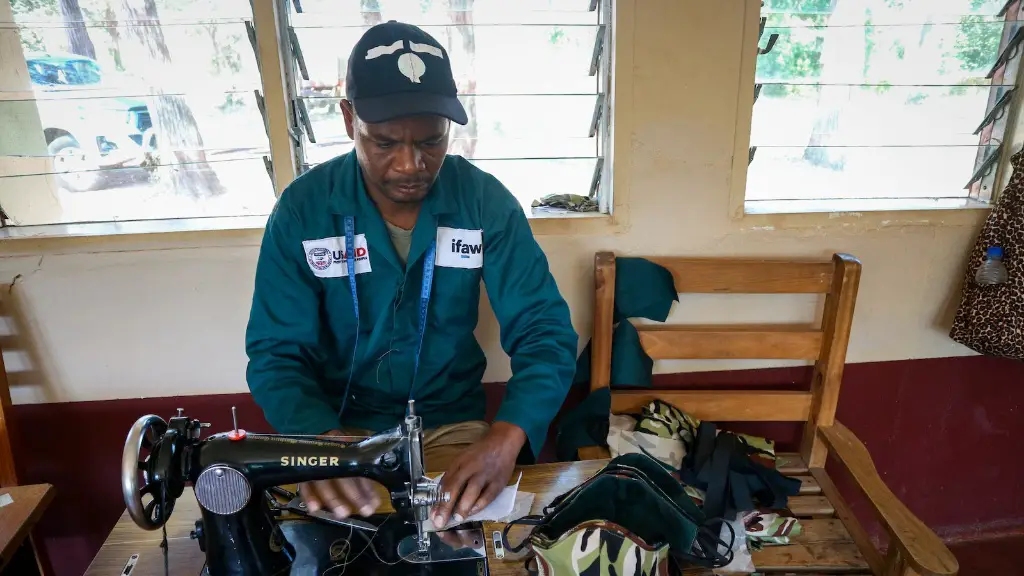When you are sewing, it is important to use fabrics that have been washed. This will help to prevent shrinkage and puckering. You should wash all fabrics before sewing, even if they are pre-washed.
Before you start sewing, you should always wash your fabric to preshrink it and to remove any dirt or chemicals that may be on the fabric. Depending on the type of fabric, you may need to use different washing methods. For example, delicate fabrics like silk should be hand washed in cool water, while more durable fabrics like denim can be machine washed in hot water. Always check the care label on the fabric before washing to ensure that you are using the correct method.
Is it necessary to wash fabric before sewing?
There are a few reasons why you should pre wash your fabric before sewing with it. The first reason is that cotton fabrics often shrink around 5% when they are washed. But a shrinkage between up to 10% is not uncommon in fabrics made from natural fibers. So if you don’t wash your fabric before sewing, and then wash your final garment, your garment you might not fit correctly. The second reason is that pre washing your fabric will allow you to check for any flaws in the fabric. And finally, pre washing your fabric will help to remove any chemicals that might be on the fabric from the manufacturing process.
Pre-washing fabrics is an important step in the garment-making process. Almost all fabrics need to be laundered in the same manner that you plan to launder the completed garment. This will ensure that the fabric shrinks and colors set properly before you begin sewing. You can, however, skip pre-washing for 100% polyester fabrics such as polar fleece and minky, or vinyl such as faux leather.
How do you prepare fabric before sewing
You should always wash and dry your fabric before you start working with it. This will help to pre-shrink the fabric and also to remove any chemicals or dirt that may be on the fabric. Washing and drying your fabric exactly as you plan to wash and dry your finished garment will help to ensure that the finished garment will have the same dimensions and will not be damaged in the wash.
If you’re going to wear new clothes without washing them first, be aware that they may transfer dye to your skin. While you likely won’t experience any serious health issues from doing this, it’s just good personal hygiene to wash your clothes before wearing them. Make sure to follow the instructions on the care tag before washing.
Is it OK to wear unwashed new clothes?
If you are concerned about your exposure to skin-irritating compounds, washing your new clothes before you wear them is the best way to reduce your exposure. Using high-efficiency washing machines and detergents will help to remove residues and chemicals.
Pre washing is an important step when sewing, as it helps to ensure that your fabric will not shrink or bleed when washed later. Cotton, linen, and natural fibers should always be prewashed, as they are likely to shrink. Synthetic fabrics should also be prewashed to check for color bleeding.
Is 100% polyester dry clean only?
There are a few different types of fabrics that don’t need to be dry cleaned. Synthetic fabrics, like polyester, nylon, spandex, and acrylic, are safe to wash in warm water. However, you should be careful not to put them in a hot dryer, as they can wrinkle permanently. Acetate is another fabric that doesn’t need dry cleaning, and it can also be washed in warm water.
If you’re using the prewash option on your washing machine, you should add powdered detergent to the prewash detergent compartment. The amount of detergent recommended for the prewash option is half the amount recommended for the main wash cycle.
What are the 4 steps in fabric preparation
Preparation of fabric for cutting and sewing involves the following steps: straightening, shrinking, pressing. The success of a finished garment depends largely on these important steps. Before discussing these, certain words need to be defined and should become a working part of any seamstress vocabulary.
If you’re looking to save a little extra time when doing laundry, clipping the corners off of your clothes can help them get clean faster. This is because the corners can often trap dirt and other debris, which can then be difficult to remove. By clipping the corners off, you can help ensure that your clothes are as clean as possible.
What are the five steps in fabric preparation?
Fabric preparation is the process of making fabric ready for use. It involves singeing, desizing, scouring, bleaching, and mercerizing.
If you value your health and hygiene, it’s best to wash your new clothes before you wear them. Wearing new clothes straight from the store can cause nasty reactions, and has the potential to pass along some ickiness that maybe you’d rather not know about. So take a few minutes to wash your new clothes before you wear them, and enjoy the peace of mind that comes with knowing you’re clean and protected.
Is it okay to wear clothes you just bought online
If you’re concerned about the chemicals in your clothes, be sure to wash them before wearing them. This will help remove any chemicals that could potentially cause skin problems.
It is important to wash your clothing regularly in order to keep them clean and looking their best. T-shirts, tank tops, and camisoles should be washed after each wearing, while outer clothes like dress shirts and khakis can be worn a few times before washing. Jeans can typically be worn 3 times before washing. If it is hot out or you are sweating, you may need to wash your clothing more frequently. Be sure to check for dirt or stains before wearing your clothing again.
Why do new clothes say wash before wearing?
It’s always a good idea to wash new clothes before you wear them for the first time. This will remove any chemical finishes that manufacturers put on clothes to make them look better, and it will also rinse out any excess dye. This will help to keep your clothes looking their best and prevent any unwanted color transfer.
It is always best to wash your jeans before wearing them for the first time. This will help to prevent any dyes from bleeding onto your skin or other clothes. The only exception to this rule is for raw denim.
How long can you wear clothes without washing
Pants and sweaters can generally be worn a few times before they need to be washed, while T-shirts and Henleys usually need to be washed after one or two uses. Jeans can often last an entire season without being washed, though it is important to wash them occasionally.
Flannel is a fabric that is known to shrink, so it is important to prewash it before sewing. Flannel is often sewn together with fabrics that are polyesters, such as minky or fleece, which do not shrink. Sewing unwashed flannel can result in bunching and puckered seams.
Conclusion
If you’re going to sew with a fabric, you should always wash it first. This is especially important with natural fibers like cotton and linen, which can shrink when they’re first washed. Washing the fabric will also remove any finishes or treatments that it has, which could interfere with the sewing process.
You will need to wash all fabrics before sewing, as some fabrics may shrink whenwashed.




